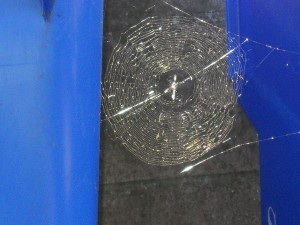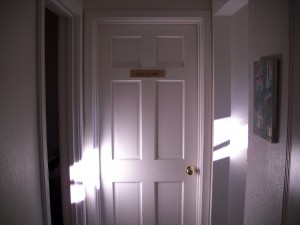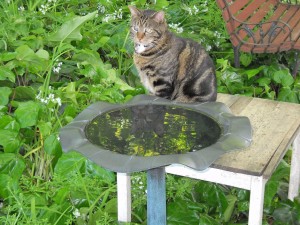The media’s late-December offerings are bulging with how-to messages for 2011: How to have a better body, be a better person, live a better life. How to…be better. The assumption, I suppose, is that our 2010s have been frittered away in some nonstop competition to see how much we can eat, how little we can exercise, and how successfully we can ignore nonprofits by withholding our charitable contributions. In 2011, we’ll be better!
You can take all that advice if you like, but I have just four words to offer you which, depending upon on how you live your life in the present, may potentially change your life in the future. It starts with a story….
In 1986, I went on my first-ever backpacking trip, tagging along with a 27-year-old self-described Renaissance man and his best buddy. My comic adventures are set out in “The First 43 Miles are the Hardest,” which I sold to Sierra Life magazine and was published in their May/June 1987 issue. But there was a darker side to that trip which, until this moment, has never been revealed. (How’s that for a tease?)
At the time of the trip I was freshly hurting from the end of my 10-year marriage. I’d met “Stuart,” the backpacker, in a theatre production. I had a mad crush on him and when he nonchalantly asked if I wanted to accompany he and his friend “Richard,” I couldn’t decide whether to go until my girlfriend told me over the phone, “Are you nuts? The man of your dreams just asked you to be alone in the mountains with him for a whole week! You HAVE to go!” And so I went.
From the outset, things did not go well. I allowed Stuart to drive my little Capri up to the Copper Creek trailhead which was the access point to our Kings Canyon destination; Richard met us there. As set out in my story (subtitled, “What happens when a sheltered, middle-class, mildly neurotic 33-year-old embarks on her first backpacking trip”), there were bears, there was a forest fire and, on the last day, there was a terrifying 10-mile run down the mountain to escape the fire, resulting in patellar tendonitis in both my knees.
But more than that, there was me, having absolutely no control over my own life. Stuart and Richard had been hiking together for years. They had their own routines and preferences and whatever they said, went. Example: We hiked 5 to 7 miles daily and I, a high-energy person in the mornings, would have preferred to start those hikes right after breakfast so that we could stop and make camp by mid-afternoon. Instead, the two of them chose to hang around camp until almost noon, starting our daily hike so late in the day that more often than not we were making our dinner and pitching the tent in total blackness. Frequently while hiking they would decide to stop, shed all their clothes, and go swimming in an alpine lake. Lovely as that sounds, I hadn’t known them that long and wasn’t about to get nekkid with them, so all I could do was hope they’d hurry so we could get to our camping spot before midnight.
And then there came the day when Stuart told me he and Richard wanted to take a day hike that would of necessity exclude me because it was beyond my novice hiking ability. Did I mind staying by myself all day while they took off? Clearly, they were in charge of the expedition and I was subject to their every whim. I followed, I sat, I obeyed, I waited, I tagged along. For seven. long. days.
The last day of the trip, during that seemingly endless 10-mile run to the Copper Creek trailhead parking lot, all I could think about was my Capri. My car, my beautiful little maroon Capri with the tiny orange pinstriping, was waiting. And, crazy as it sounds, it became symbolic to me of my freedom. Because once I got behind the wheel, then I was in charge of my own expedition from that moment forward. I absolutely could not wait.
We arrived in the lot late afternoon, stashed our gear, and said our good-byes to Richard, who was going to follow us down the mountain in his little truck. By now there was a good deal of tension between Stuart and me. I didn’t even wait for a discussion as to which of us was going to drive home. I opened the passenger door for him, got in my Capri, and we took off. I was stopping for nothing and no one. It was my car. My life. My expedition. About halfway down the mountain, Stuart was looking at the view in the east and asked if I wanted to stop and take some photos. “No.” He looked at me curiously, because it wasn’t like me to be so brusque.
“No,” I repeated. “I’m going home.” I gripped the wheel more tightly, staring straight ahead, thinking You’re along for MY ride now, buddy.
And that is how I came to this moment, and my four words of advice. They mean, as much as possible in 2011, take control of your destiny. Don’t allow others to lead you down any path you don’t want to be on. Make your own journey and take charge of your own expedition in whatever way that may be meaningful to you. The four words are: Drive your own car. And don’t let anyone stop you until you’re home.







